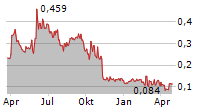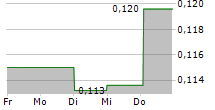
LUND, SWEDEN / ACCESSWIRE / October 10, 2024 / Cantargia (STO:CANTA) Cantargia (Cantargia AB; Nasdaq Stockholm: CANTA) today announced the publication of the results using nadunolimab (CAN04) combination therapy in advanced/metastatic pancreatic cancer (PDAC) in the scientific journal Clinical Cancer Research, a journal of the American Association for Cancer Research. Efficacy in the 73 patients treated was better than expected for chemotherapy only based on historical data. Strongest efficacy was observed in patients with high tumor levels of IL1RAP, the target of nadunolimab, with median overall survival (OS) of 14.2 months. The safety was acceptable and notably the level of neuropathy was much lower than expected from chemotherapy alone, suggesting a protective effect of nadunolimab.
"The efficacy results and the observed neuroprotective effect of nadunolimab are clearly intriguing. We are proud of this publication in one of the leading oncology journals and look forward to the increased visibility and upcoming steps in the development of nadunolimab," said Göran Forsberg, CEO of Cantargia.
Patients with metastatic PDAC have a poor prognosis, and survival probability is <5% at 5 years. The fibro-inflammatory microenvironment which characterizes pancreatic cancer has a stroma infiltrated by cancer-associated fibroblasts and immune cells, creating an environment which involves upregulation of IL1RAP and tumor promoting IL-1 signaling with associated downstream pro-tumor cytokines. Nadunolimab combines blockade of the IL-1 signaling pathway through IL1RAP inhibition with a pronounced ADCC activity.
In the CANFOUR trial, 73 first line pancreatic cancer patients were treated with nadunolimab and gemcitabine/nab-paclitaxel (GN). The median OS of 13.2 months is longer than OS reported in Phase 3 trials for GN alone (8.5-9.2 months), FOLFIRINOX (11.1 months), or NALIRIFOX (11.1 months). In patients with available baseline tumor biopsies, IL1RAP expression was measured on tumor cells. A high expression of IL1RAP correlated with better efficacy outcomes including a median OS of 14.2 months vs. 10.6 months for the IL1RAP low subgroup (p=0.026; n=29 and 20, respectively). The 1-year survival rate in the IL1RAP high subgroup was 67% compared to 39% in the IL1RAP low subgroup. Addition of nadunolimab to GN was generally well tolerated, although with an increased incidence of grade 3/4 neutropenia and febrile neutropenia, unless managed with prophylactic use of growth factor support.
Notably, the incidence of peripheral neuropathy was lower than expected from chemotherapy treatment. It is likely that IL-1 driven inflammation plays a role in nab-paclitaxel induced neuropathy. Only one grade 3 event was recorded and a statistically significant (p=0.042) relationship between nadunolimab dose level and onset of neuropathy was observed. These data suggest that nadunolimab may confer a protective effect on the development of neuropathy.
" The efficacy and safety results, particularly the striking efficacy of the IL1RAP high subgroup as well as the lower than expected incidence of severe neuropathy highlight the potential of nadunolimab as a cancer therapy which may provide antitumor effects together with a protective effect when combined with chemotherapy. These results clearly warrant further development and we look forward to upcoming clinical studies with the aim to bring a much needed new treatment option to patients with metastatic pancreatic cancer. " said Dominique Tersago, CMO of Cantargia.
The publication, titled " Efficacy and safety of the anti-IL1RAP antibody nadunolimab (CAN04) in combination with gemcitabine and nab-paclitaxel in advanced/metastatic pancreatic cancer", by Van Cutsem et al , is available online at the jounal's website Clinical Cancer Research | American Association for Cancer Research (aacrjournals.org), and through a link at Cantargia's website https://cantargia.com.
References
Von Hoff et al, N Engl J Med 2013; Wainberg et al, Lancet 2023: Conroy et al, NEJM 2011
For further information, please contact
Göran Forsberg, CEO
Telephone: +46 (0)46-275 62 60
E-mail: goran.forsberg@cantargia.com
About Cantargia
Cantargia AB (publ), reg. no. 556791-6019, is a biotechnology company that develops antibody-based treatments for life-threatening diseases and has established a platform based on the protein IL1RAP, involved in a number of cancer forms and inflammatory diseases. Cantargia's oncology program, the antibody nadunolimab (CAN04), is being studied clinically primarily in combination with chemotherapy with a focus on pancreatic cancer, non-small cell lung cancer and triple-negative breast cancer. Positive interim data for the combinations indicate stronger efficacy than would be expected from chemotherapy alone. Cantargia's second development program, the antibody CAN10, blocks signaling via IL1RAP in a different manner than nadunolimab and addresses treatment of serious autoimmune/inflammatory diseases, with initial focus on systemic sclerosis and myocarditis.
Cantargia is listed on Nasdaq Stockholm (ticker: CANTA). More information about Cantargia is available at www.cantargia.com.
About nadunolimab (CAN04)
The antibody nadunolimab binds strongly to its target IL1RAP and functions by inducing ADCC and blocking IL-1alpha and IL-1beta signaling. Nadunolimab can thereby counteract the IL-1 system which contributes to the immune suppressive tumor microenvironment and development of resistance to chemotherapy. Nadunolimab is investigated in multiple clinical trials; the phase I/IIa trial CANFOUR, NCT03267316, evaluates nadunolimab in combination with standard chemotherapies in patients with PDAC (gemcitabine/nab-paclitaxel) or NSCLC (platinum-based chemotherapies). Positive interim data show durable responses for the combination therapy in 73 PDAC patients, resulting in median iPFS of 7.2 months and median OS of 13.2 months. An even higher median OS of 14.2 months was observed in a subgroup of patients with high tumor levels of IL1RAP. Strong efficacy was also observed in 30 NSCLC patients with median PFS of 7.0 months and a response rate of 53%; even higher responses were observed in non-squamous NSCLC patients. Early efficacy data from the phase Ib/II trial TRIFOUR, NCT05181462, also shows signs of promising efficacy in TNBC with a 60% response rate for nadunolimab combined with carboplatin/gemcitabine. Nadunolimab is also investigated with chemotherapy in the clinical trials CAPAFOUR, NCT04990037, and CESTAFOUR, NCT05116891, and with the checkpoint inhibitor pembrolizumab in the CIRIFOUR trial, NCT04452214.
Attachments
Cantargia's strong Phase 2 clinical data in pancreatic cancer with nadunolimab published in Clinical Cancer Research
SOURCE: Cantargia
View the original press release on accesswire.com


